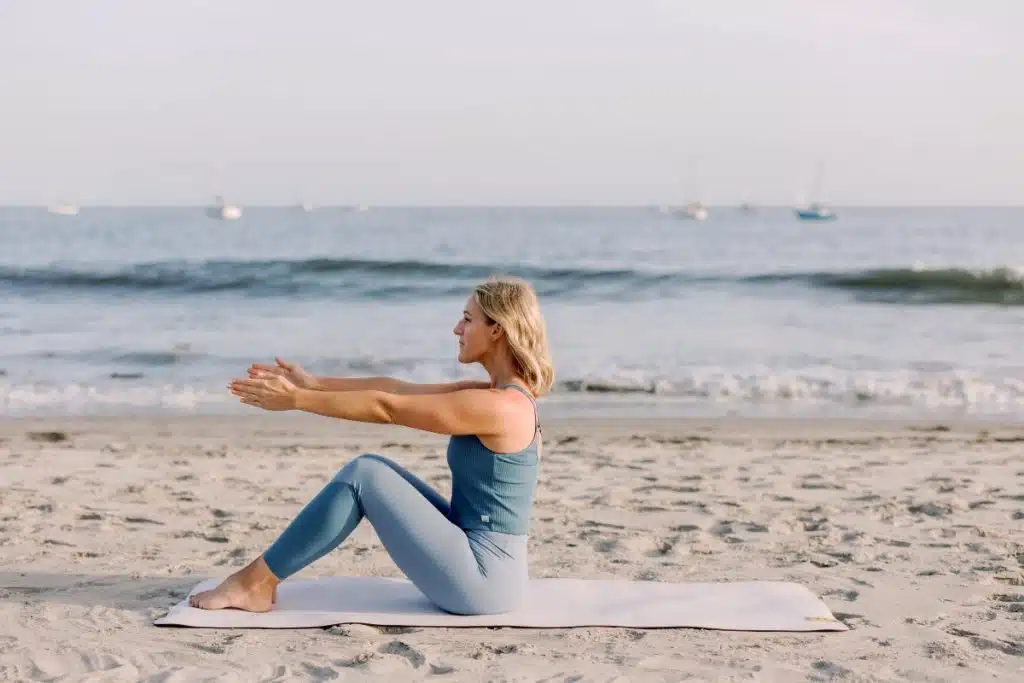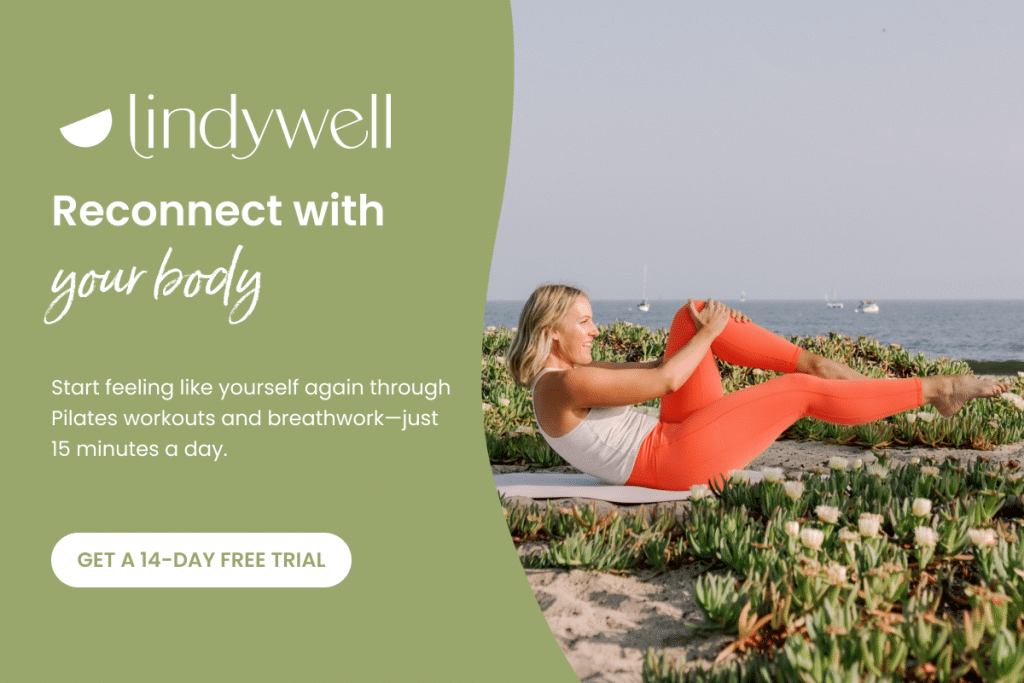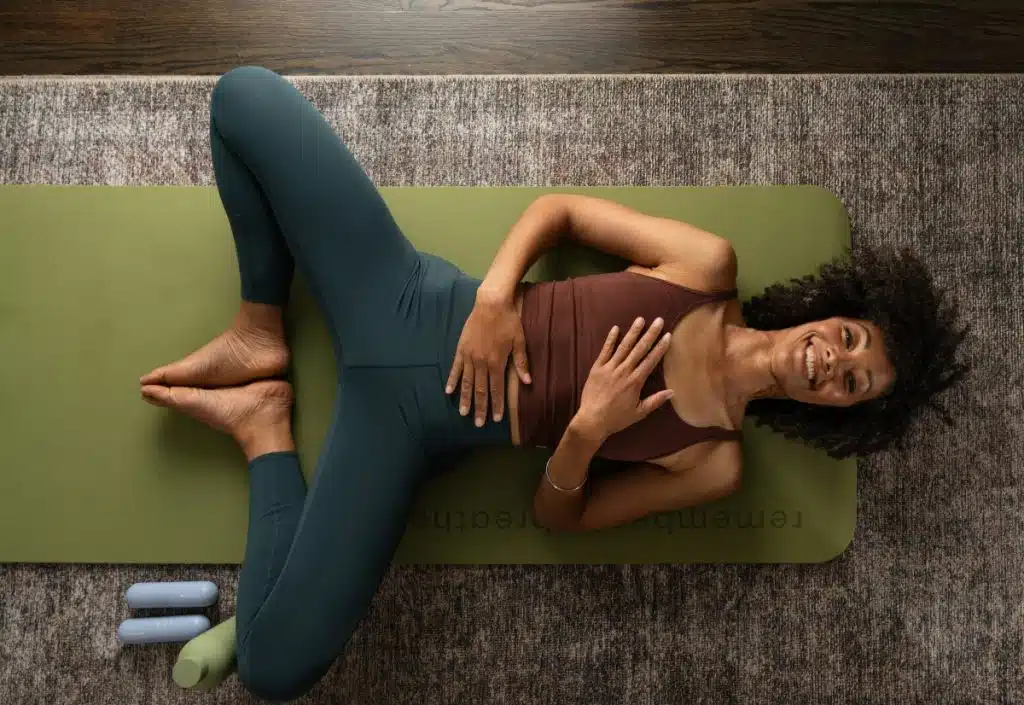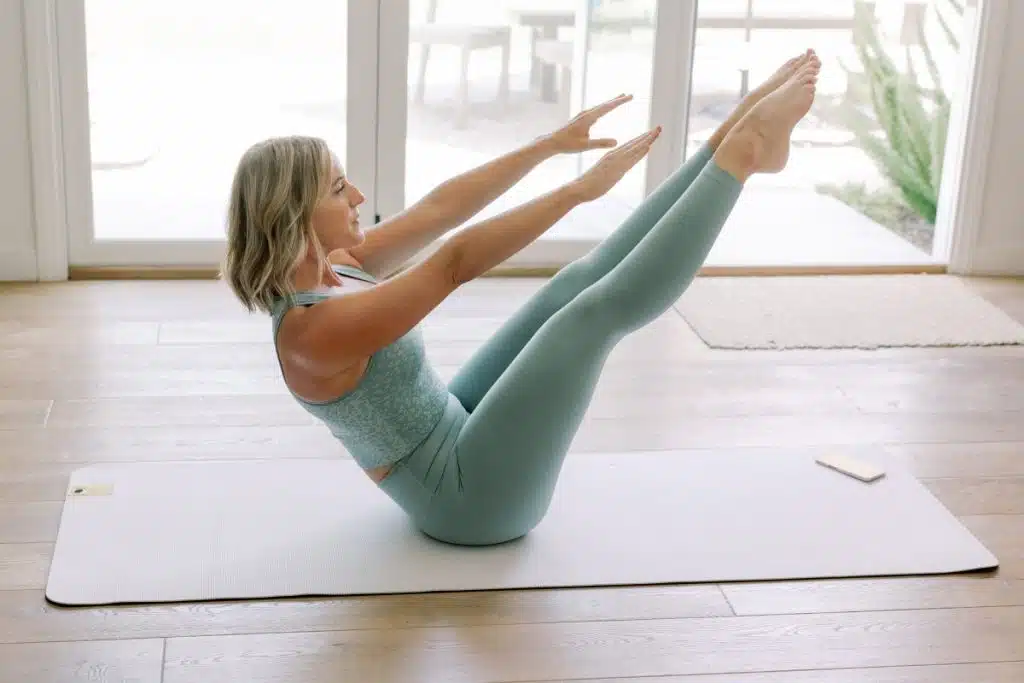
Joseph Pilates once said: “If your spine is inflexibly stiff at 30, you are old. If it is completely flexible at 60, you are young.” I love this quote because it underscores just how vital spinal mobility is for holistic wellness, no matter the stage of life we’re in.
But a healthy spine is not guaranteed—we must intentionally work to sustain it. According to a recent survey, almost 30 percent of U.S. adults suffer from chronic back or sciatic pain. Around 17 percent confirm this affects their physical well-being, and another 13 percent also feel it negatively impacts their mental health.
Prior to finding Pilates, back pain was a real issue for me. Between long hours sitting at my desk and Scoliosis that caused an imbalance in my body, I struggled. Pilates made a huge impact and I’m so grateful to say that back pain is no longer an issue for me (and I even made it through multiple full-term pregnancies, back pain-free)!
Fortunately, it’s never too late to improve and maintain spinal mobility. Let’s discuss why
spine health matters and how to cultivate it through Pilates.

Why Spine Health Matters for All Seasons of Life
I was shocked when I learned that chronic back pain is the number one cause of global disability rates. The same research I linked above shows a direct correlation between spinal issues and a co-occurrence of other serious health concerns such as diabetes, hypertension, or cardiovascular problems.
However, prioritizing musculoskeletal function (which includes spine health) can help you resist age-related physical deterioration and improve long-term wellness outcomes, including:
- Increased muscle strength
- Joint flexibility
- Balance and coordination
- Bone density
- Range of motion
- Mental sharpness
- Vascular and metabolic health
- Lower risk of painful, mobility-restricting conditions such as osteoarthritis
So, what’s the connection? Your spinal column (from the brain stem, down the midsection, to the lower back) forms a basis for the whole body’s musculoskeletal structure. It also contains the central nervous system, which facilitates both movement and sensation. A healthy spine ensures optimal functioning, which creates the stability to reach, bend, twist, lean, stand, walk, stretch, and perform other routine activities with ease.
As you grow older, spinal health becomes even more crucial to maintain your independence. Adults over age 40 are susceptible to conditions like sarcopenia (muscle deterioration), disc herniation, osteoporosis, or lumbar spinal stenosis, according to the Journal of Medical Sciences.
Not only can these issues lead to chronic pain—they also increase the risk of bone fractures or other fall-related injuries. Whereas robust spine health will keep you active and mobile so that you can keep doing all the things you love to do.
The Powerful Benefits of Pilates for Spine Health
Whether you’re desk-bound each day, engaged in physically demanding activities, or simply dealing with the natural aging process, spine health plays a crucial role in your overall well-being—as we’ve seen already!
Enter Pilates—one of the best ways to maintain spinal mobility and spine health through all stages of life. But how? Let’s get into that.
Core Strength
First and foremost, Pilates activates core strength—not just for aesthetic reasons, but to promote functional movement in the abdominals, pelvic floor, and back muscles. Core stabilization exercises help strengthen the spinal column to alleviate chronic pain, restore postural alignment, and lower the risk of disability.
Muscle Support
Pilates also focuses on gentle movements to stretch out and lengthen the muscles and fascia. This will enhance flexibility, while reducing the muscular tension or stiffness that can often lead to spinal discomfort, imbalance, and mobility restriction, Pilates can improve the range of motion in the trunk, while helping to correct spinal misalignments or curvature issues.
Read my blog post, Pilates for Scoliosis: How to Find Relief with Movement, to learn more about how this can impact you, even with chronic pain.
Body Awareness
Another benefit of Pilates is the emphasis on mindful movement. Through a series of fluid but precise motions, you will learn to activate the right muscles and maintain optimal form during each exercise. This body awareness translates from the Pilates mat into other daily activities to encourage a healthier posture and movement patterns in all areas of life. Becoming mindful of how you move can help break habits that cause spinal issues and help you to enjoy your favorite activities for years to come.
Low Impact
The low-impact nature of this exercise makes Pilates accessible to just about everyone across all fitness levels, physical abilities, and life stages. You can adapt each movement to suit your own personal needs, making Pilates both a safe and effective method to increase spinal mobility and long-term health overall.
Some physiotherapists even use Clinical Pilates to restore spinal motor coordination during injury rehabilitation.
Spinal Mobility Exercises to Work into Your Routine
Time for the fun part—let’s talk about some Pilates exercises you can practice to nurture spine health daily. These movements are part of Lindywell’s FREE Pilates for Beginners series, so check out the full program for total-body wellness!
Roll Downs
Stand with your feet hip-distance apart and lengthen your spine to the sky. Gently nod your chin to your chest as you articulate your spine forward, rolling down toward your feet. Let your arms relax and draw your belly button toward your spine as you roll back up to standing, stacking one vertebra at a time.
This is one of the best stretches you can do for the entire spinal column. It alleviates pressure from your neck, stimulates blood flow, and loosens up your back and pelvis.
Note: If you have Osteoporosis and are concerned about forward flexion, simply flex at the hips and maintain a flat back as you stretch forward toward your feet.
Standing Twists
For this exercise, you’ll place both hands at the base of your head, and gently press your head back into your hands to elongate your spine. Keep your hips squared off to the front as you rotate in the rib cage. This rotation should come from the center of your spine, and remember to breathe to facilitate the movement and enjoy the stretch
C-Curve Rolls
Sit on your mat with your knees bent and your spine lengthened up to the sky. Reach your arms forward, tuck your tailbone and round back in your spine (creating a c-curve shape with your spine). Pause and inhale, and as you exhale draw your belly button toward your spine and return to a tall seated position. If you’re avoiding flexion, simply hinge back with a flat back and use your deep core strength to return to a seated position.
Pelvic Curls
Lie on your back with your knees bent and your feet flat on the floor. Inhale to prepare and as you exhale tuck your tailbone and articulate your spine up into a bridge position one vertebra at a time. Pause at the top and slowly roll back down through your spine. Keep your collarbone open and remember to breathe. If your back feels tense as you move through this movement, adjust your feet closer for more support.
Prioritize Your Spine Health With Lindywell
Want to learn even more gentle Pilates exercises for spinal mobility?
Join us here at Lindywell. As a member, you can access 350+ online Pilates sessions to increase your strength, balance, flexibility, range of motion, and holistic wellness—no matter what season of life you’re in. Sign up for our FREE Pilates for Beginners program to get these exercises plus more workouts for you to experience the full range of benefits!







2 thoughts on “The Best Spinal Mobility Exercises for Long-Term Health”
The teaser is one I can not do!
You are certainly not alone, Daniel! The teaser is definitely a challenging exercise. Here are a couple of videos that might help you to modify and/or progress towards the teaser: Pilates Exercise Progressions, 21 Days of Pilates: Pilates Teaser and Pilates How To: The Teaser Remember to listen to your body and modify whenever you need to! You are still gaining strength and working towards your goals. And we are cheering you on!